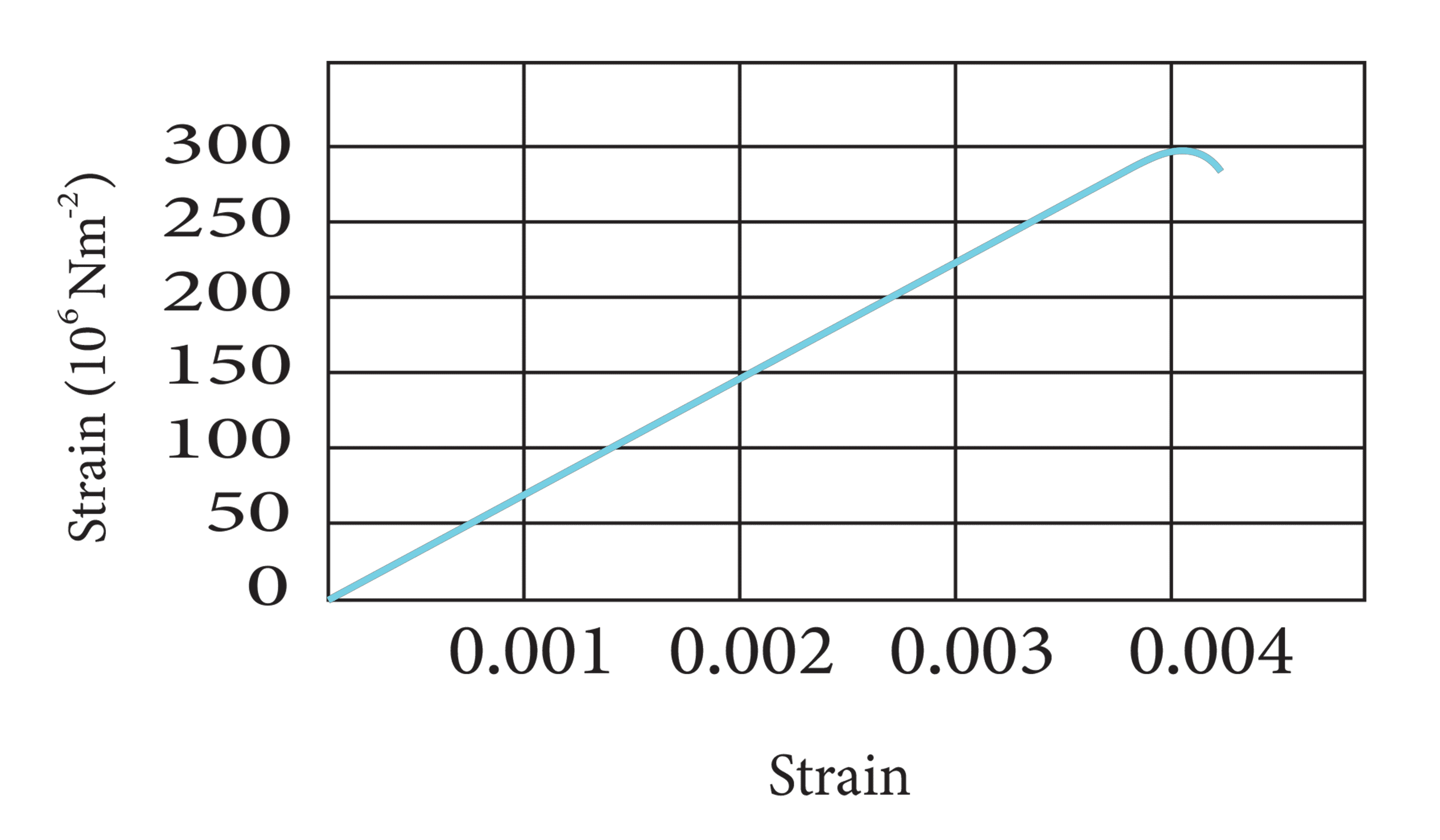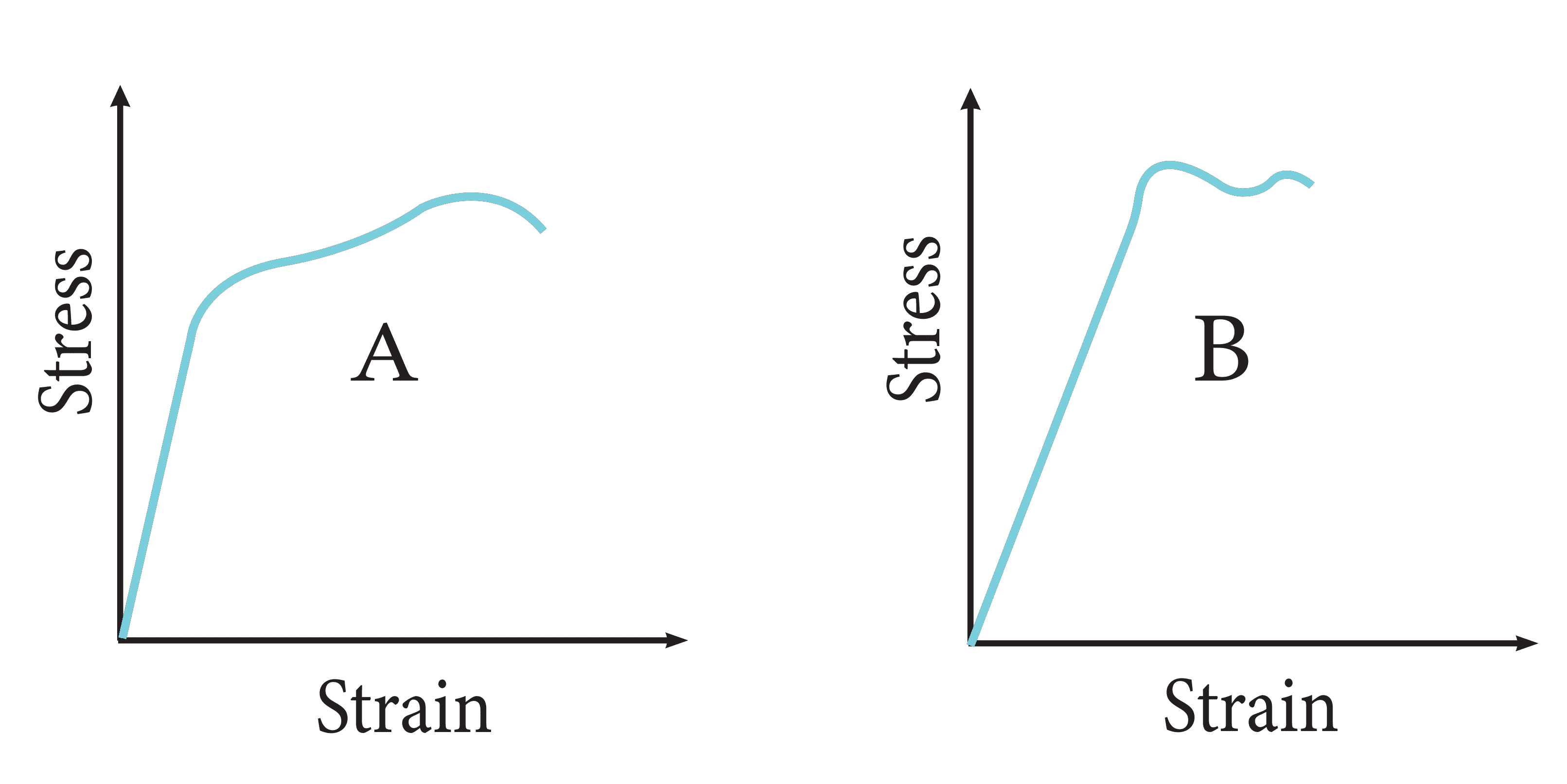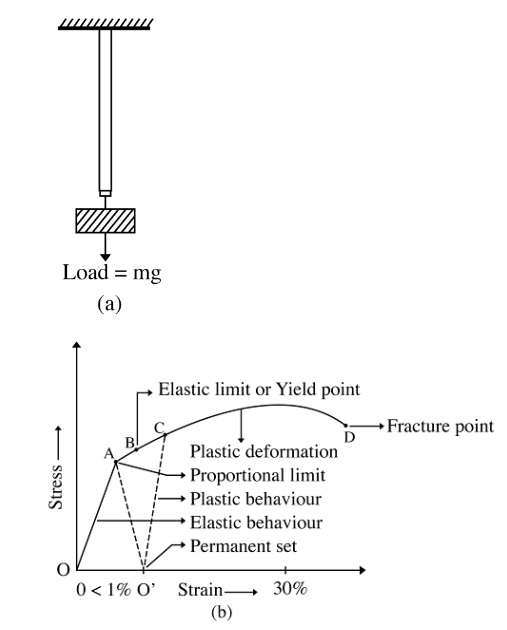NCERT Solutions for Class 11 Physics Chapter 8 Mechanical Properties of Solids - FREE PDF Download
FAQs on NCERT Solutions for Class 11 Physics Chapter 8 Mechanical Properties of Solids
1. What are Some Mechanical Properties of Solids?
Mechanical Properties of Solids Class 11 NCERT PDF go into the depths of the topic. It also describes the various mechanical properties of solids, some of which are as follows:
Brittleness: Brittleness is the property of solids due to which they break into smaller pieces when enough force is applied.
Compressive Strength: Due to their compressive strength, solids resist being pushed together.
Ductility: It is the property of solids that results in their deformation under tensile strength.
Elasticity: An elastic substance is capable of resisting distortions or deformations under an applied force. These materials return to their original shape when the force is removed.
Other than that, solids also show plasticity, which is the ability to undergo permanent deformation when a force is applied.
2. What is Elastic Moduli?
Most solids resist elastic deformation when stress is applied. Elastic modulus is the quantity that measures this resistance. It is an important inclusion of Class 11 Physics Chapter 9.
3. What is Hooke’s Law?
Hooke’s law states that the size of deformation of an object is directly proportional to the force of deformation.
4. What is an intermolecular force?
As discussed in the chapter, the force of attraction or repulsion acting between the particles (atoms, molecules and ions) neighbouring each other, is referred to as the intermolecular force of attraction or repulsion. Intermolecular forces are considered weaker in comparison to the intramolecular (covalent and ionic bonds) force acting between the atoms and molecules. Examples of intermolecular force are the London dispersion force, ion-dipole interaction etc.
5. What are the practical applications of the Mechanical Properties of Solids Class 11?
Solid mechanics has a plethora of real-life applications. It is one of the most fundamental applied engineering sciences which plays a crucial role in explaining a lot of physical phenomena around us and in explaining human anatomy. It is also used extensively in surgical implants and the design of dental prostheses. The principles and properties of solid mechanics have also been used in the Euler–Bernoulli beam equation.
6. Where can I get the NCERT Solutions for Class 11 Physics, Chapter 9?
To avail the NCERT Solutions for Class 11 Physics, Chapter 9, refer to Vedantu's NCERT Solutions for this chapter. After clicking on the given link, a web page will open, click on the download option to download the PDF of Vedantu's NCERT Solutions for this chapter or you can also continue your studies online. It is available free of cost and can be assessed online anytime, anywhere. These solutions will clear all your conceptual doubts and will help you to fetch good marks in this Physics chapter.
7. What do I do to score well in Class 11 Physics, Chapter 9?
First of all, to study Class 11 Physics, Chapter 9, you must carefully read from the NCERT textbook to understand all basic concepts well. Once you have learnt and understood the chapter basics, proceed to the NCERT back exercise questions for this chapter. If you get stuck in between, refer to Vedantu's NCERT Solutions for this chapter to clear all doubts as soon as possible. Last but not the least, practice additional questions available on the Vedantu app and website and consistently revise this chapter to fetch a high score in the Physics exam.
8. Is Class 11 Physics Chapter 9 difficult?
Class 11 Physics, Chapter 9-Mechanical Properties of Solids can be made easy if you follow the right strategy and approach while preparing this chapter. After studying this chapter from the NCERT and solving the back exercise questions, you should solve the previous year questions from this chapter in the Physics exam. Focus more on numerical problems and prepare a list of all the formulae from this chapter. Through consistent practice and optimism, you too can master this chapter.
9. What is the stress in the Mechanical Properties of Solids NCERT solutions?
In class 11 physics ch 8 NCERT solutions, stress is defined as the force applied per unit area on a material. It is a measure of the internal forces that particles within the material exert on each other when subjected to external forces.
10. What are the important topics in Mechanical Properties of Solids in mechanical properties of fluids class 11 NCERT solutions?
Important topics in class 11 physics Mechanical Properties of Solids NCERT solutions include:
Stress and strain
Hooke's Law
Young's modulus
Shear modulus and bulk modulus
Elasticity and plasticity
Poisson's ratio
Stress-strain curves
Thermal stress
11. According to class 11 physics chapter 8 NCERT solutions, does stress depend on material?
Yes, stress depends on the material's properties as mentioned in mechanical properties of fluids class 11 NCERT solutions. Different materials have different stress responses to the same applied force, influenced by factors such as composition, structure, and temperature.
12. What is the symbol of stress mentioned in class 11 Mechanical Properties of Solids NCERT solutions?
The symbol for stress is typically denoted by the Greek letter sigma (σ).
13. What is another name for the Mechanical Properties of Solids?
Another term for the Mechanical Properties of Solids is "material properties" or "mechanical behaviour of materials."
14. What are the applications of Mechanical Properties of Solids NCERT solutions?
Applications of class 11 physics chapter 8 exercise solutions include:
Construction and civil engineering
Material selection in manufacturing
Designing structures and machinery
Understanding failure mechanisms in materials
Enhancing product durability and performance in various industries



























